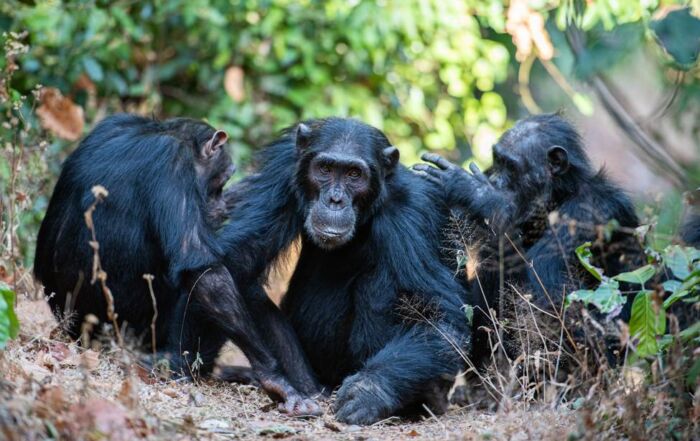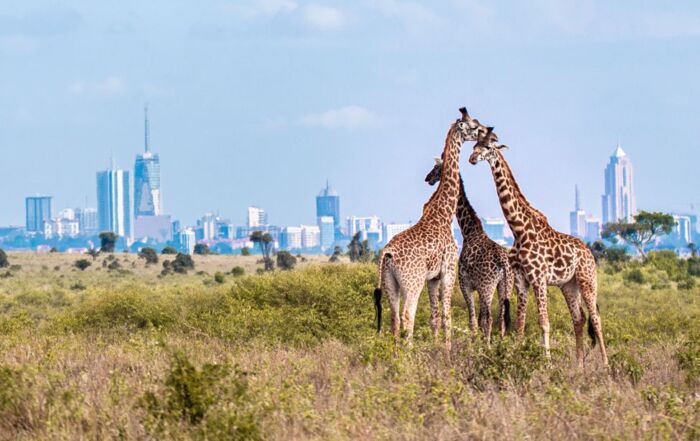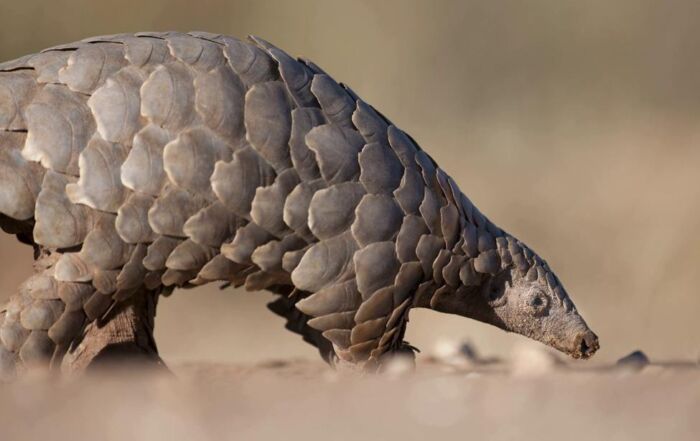Pangolins Are Elusive. Here’s How to See One on Safari.
When most people list the animals they want to see on a safari, they often start with big animals like lions, leopards, and elephants, and giraffes. But the most rewarding to spot can be the most elusive. One of those animals is the endangered pangolin—the world’s only mammal covered in scales.
This article introduces you to African pangolins and why they are so hard to find. We also offer insights on the best places to spot them.
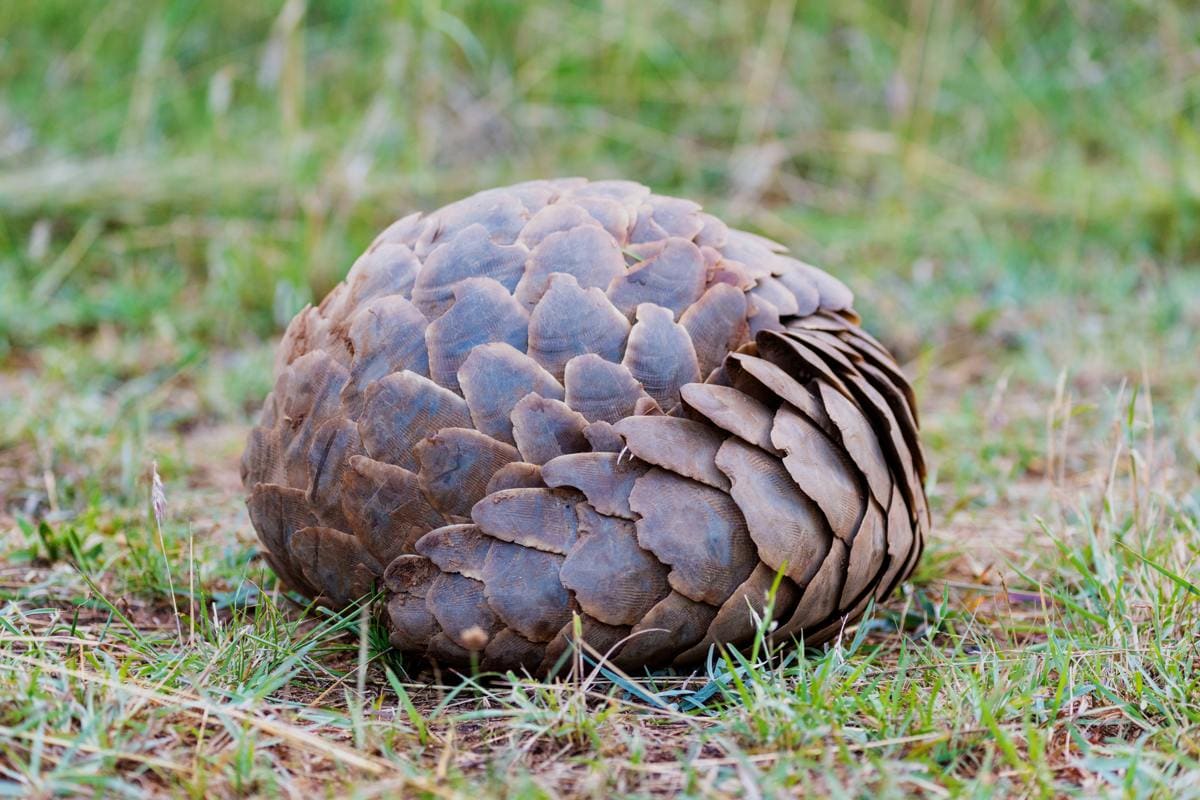
Pangolins roll into balls while sleeping and to protect themselves from predators.
What makes pangolins unique
Pangolins are famous for their scales. To protect themselves from becoming another animal’s dinner, pangolins roll into a tight ball. It’s nearly impossible for most predators to get through those scales, so they look elsewhere for food.
Pangolins also protect themselves by emitting a stink like skunks and sleeping in hard-to-reach areas. Tree pangolins sleep in trees, while ground pangolins sleep in burrows.
Pangolins eat a diet of ants and termites. Their long tongues help them reach into anthills and termite mounds. And when we say long, we mean it: the tongue is up to two feet long in some species!
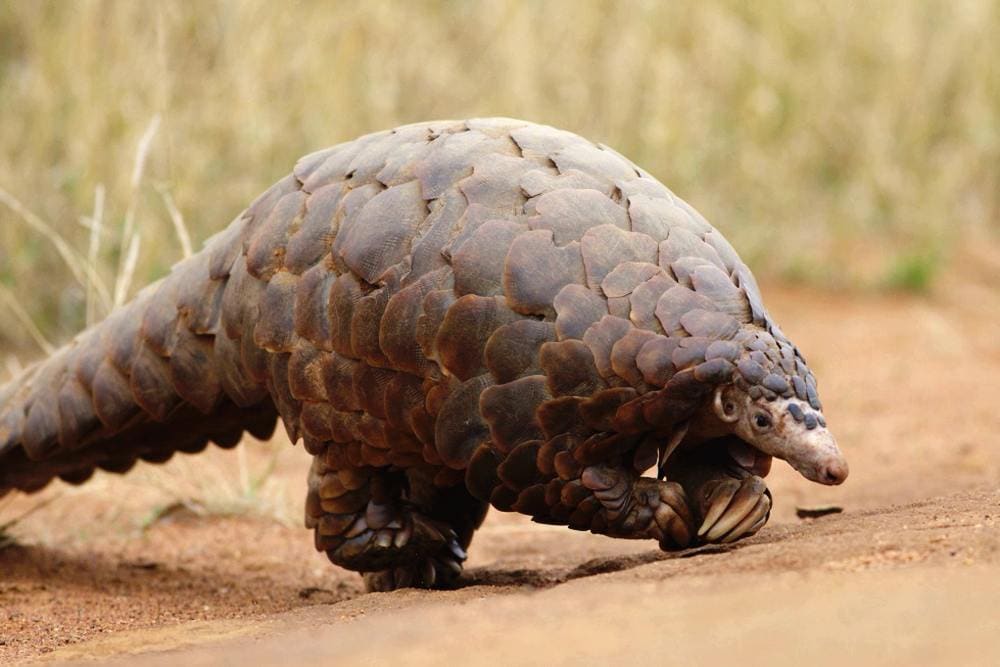
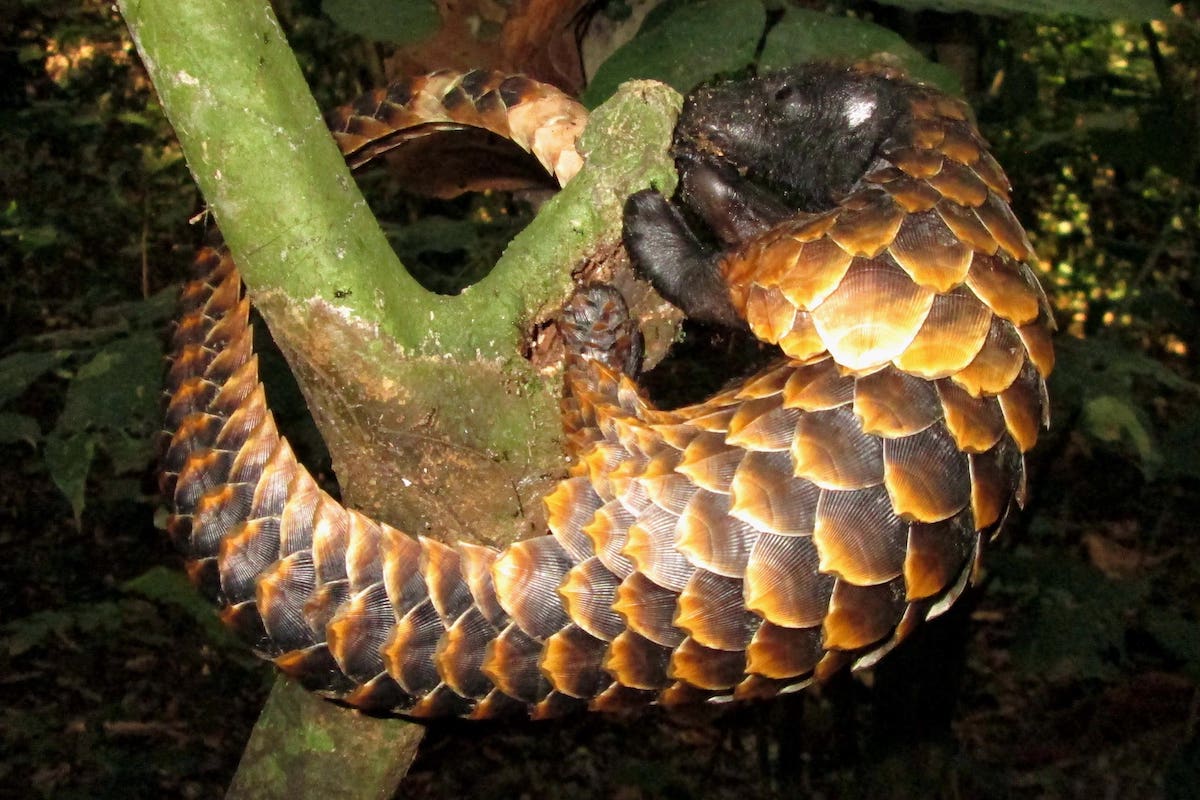
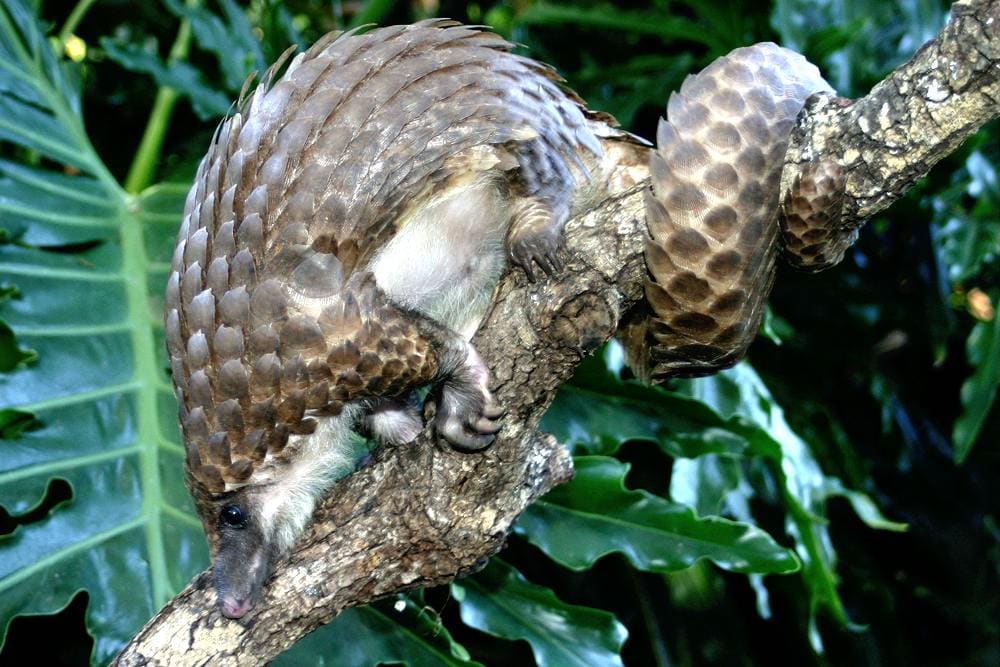
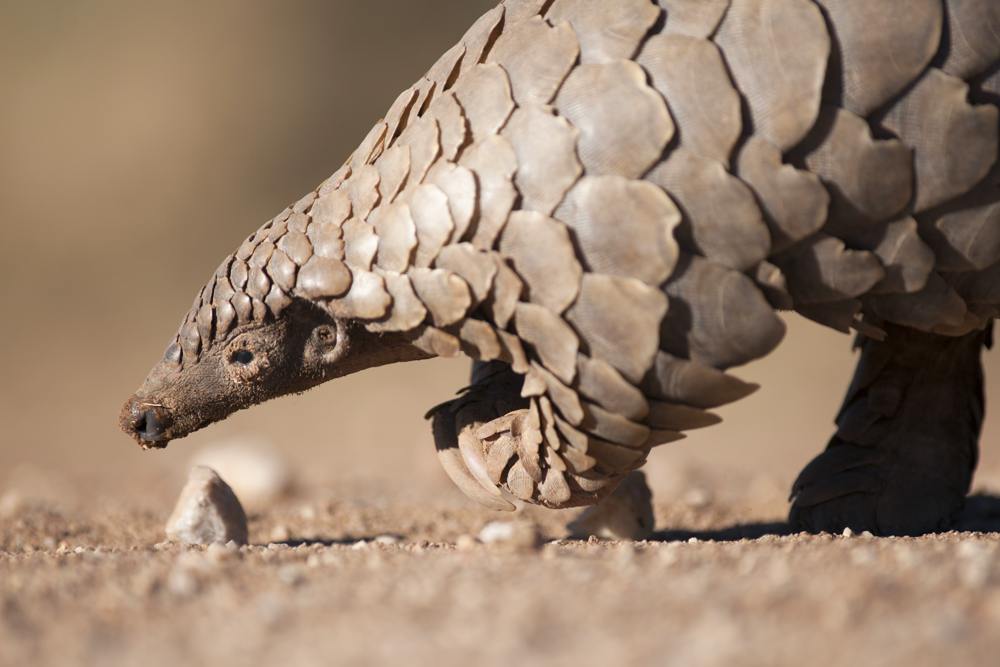
A Temminck’s pangolin ventures out of the grass (David Brossard). A black-bellied pangolin searches for insects on a green branch (Rod Cassidy). A white-bellied pangolin curls its tail around a branch (Justin Miller). A close-up of a giant ground pangolin.
How many kinds of pangolins does Africa have?
There are four species of African pangolins:
- White-bellied or tree pangolin (Phataginus tricuspis). About the size of wild rabbits, white-bellied pangolins live across central Africa, from western Kenya and Tanzania all the way to Guinea and Sierra Leone. Each of its scales has three points, so it is also called the tricuspid pangolin.
- Black-bellied or long-tailed pangolin (Phataginus tetradactyla). Black-bellied pangolins also live in trees. They are the only African pangolins more active in the daytime. They mostly live in central and western Africa. Uganda is the only country in East Africa with black-bellied pangolins.
- Giant ground pangolin (Smutsia gigantea). This is the largest pangolin species. It reaches up to 70 pounds and six feet long. Giant ground pangolins appear to be most common in western Kenya, Uganda, and Tanzania.
- Temminck’s or Cape ground pangolin (Smutsia temminckii). Temmink’s ground pangolin, or simply “ground pangolin,” is about half as big as a giant ground pangolin. It has the largest range of the African pangolin species, from Chad and East Africa to South Africa. It is the only pangolin that can live in dry climates.
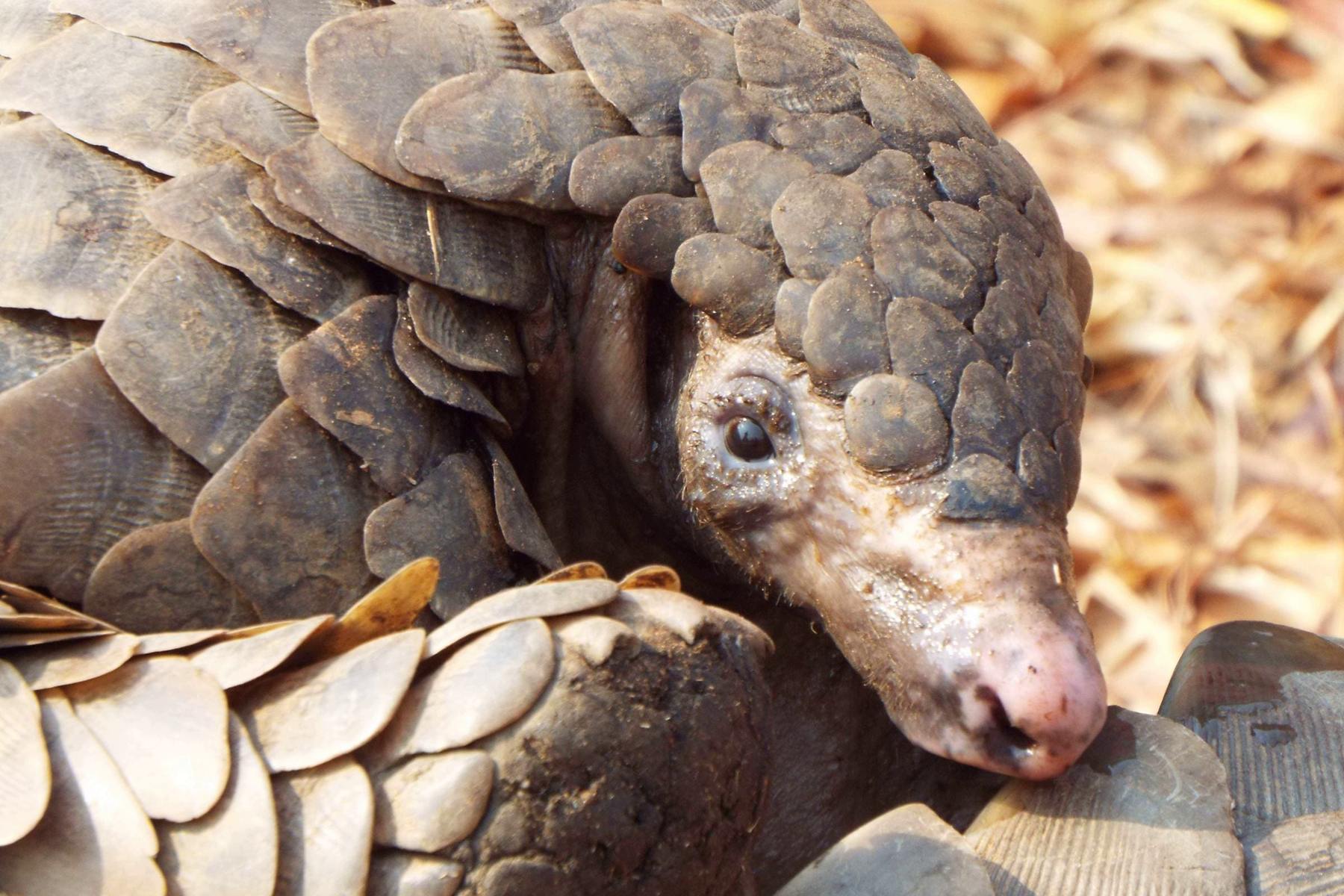
A rare safari animal
Pangolins are an uncommon sight on safaris. Why are pangolins so hard to find? The top reasons:
- The number of African pangolins is shrinking due to illegal hunting and poaching.
- Most are active at night.
- They blend in with their surrounding environment.
The biggest threat to pangolins is poaching. Why are they being killed? Although pangolin scales are made of the same substance found in fingernails, some people have a false belief that they are medicine. So poachers take the scales and send them abroad for sale. The African Wildlife Foundation estimates up to 2.7 million African pangolins are poached each year.
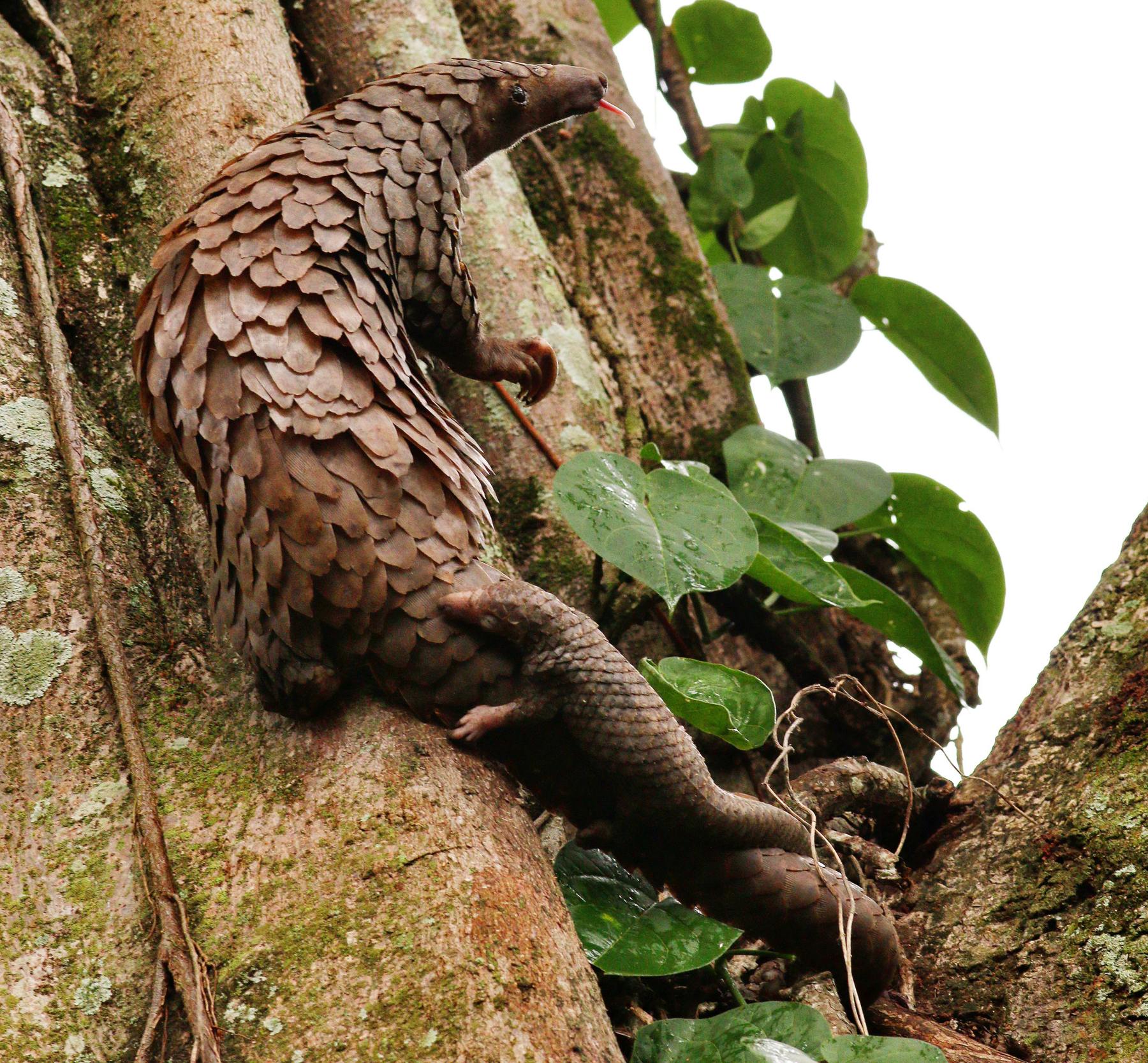
A white-bellied pangolin climbs a tree as its pup rides on its tail.
Where to look for pangolins in Africa
Pangolins are native to all mainland African countries where Ujuzi works. But in areas where poaching is a problem, guides keep them off the to-see list. To get pangolins on your itinerary, work with an experienced safari planner like Ujuzi African Travel. They will help you find parks and reserves known for their pangolin programs.
Kenya
Western Kenya has giant ground pangolins and tree pangolins. Travelers have seen pangolins in several places, including the Lake Naivasha area, Tsavo Conservation Area, and the Mara Triangle on the border with Tanzania.
The Pangolin Project works to conserve pangolins through protection, research, education, and advocacy. Its research team is based at The Safari Collection’s Sala’s Camp in the Masai Mara. Visitors can accompany the research team as it conducts field work. This provides you with the rare opportunity to travel through the savanna on foot—and you might see a pangolin while you’re at it!
Namibia
Namibia has several pangolin conservation projects where you can get a chance to see these rare animals.
Okonjima Nature Reserve is one of the better places to find pangolins in Namibia. It is home to the AfriCat Pangolin Research Program. The program observes wild Temminck’s ground pangolins to understand them.
At Erindi Private Game Reserve in central Namibia, some Temminck’s ground pangolins have been fitted with tracking devices. These devices help the conservation team monitor them and keep them safe. With dedicated pangolin tracking activities, you can venture out with a guide in the early morning or before dusk—during prime pangolin activity—and try to catch a glimpse of a pangolin before it returns to its burrow.
Another place to see pangolins is the REST wildlife rehabilitation center near Etosha National Park in northern Namibia. REST, or the Rare & Endangered Species Trust, has rehabilitated several pangolins that were rescued from poachers. These pangolins sleep in burrows at the center during the day and forage in the wild at night. Afternoon visitors have the best chance of seeing one of these pangolins.
South Africa
South Africa is home to a few reserves with specialized pangolin programs. Visitors can meet the scientists who run the programs and observe their work. This results in a high chance of seeing wild pangolins in person!
At &Beyond Phinda Private Game Reserve near South Africa’s eastern coast, a team of scientists is reintroducing Temminck’s ground pangolins to the local ecosystem. In December 2020, a wild pangolin pup was born in the region for the first time in decades—all thanks to this work!
At Phinda, you have the option of going out with the program’s ecological monitors to check on reintroduced animals. This sample itinerary includes a visit to Phinda.
In northern South Africa, you have a good chance of seeing the elusive Temminck’s ground pangolin if you stay at the Tswalu Kalahari Reserve and opt to shadow researchers there. Tswalu works closely with the African Pangolin Working Group (APWG), aiding with research and conservation.
Tanzania
Three of Africa’s pangolin species are native to Tanzania, but that doesn’t mean they’re easy to find.
In the Serengeti, staying at Namiri Plains Camp in the park’s isolated Soit Le Motonyi region offers your best bet for seeing pangolins. (And if you miss out on pangolins, you are pretty much guaranteed to see high numbers of cheetahs and many of the Big Five.)
The Ruaha Valley of southcentral Tanzania is known for its population of Temminck’s ground pangolins.
To increase everyone’s chances of seeing pangolins here in the future, consider supporting African People & Wildlife. It works to end poaching in Tanzania and protect the country’s wild animals, including pangolins.
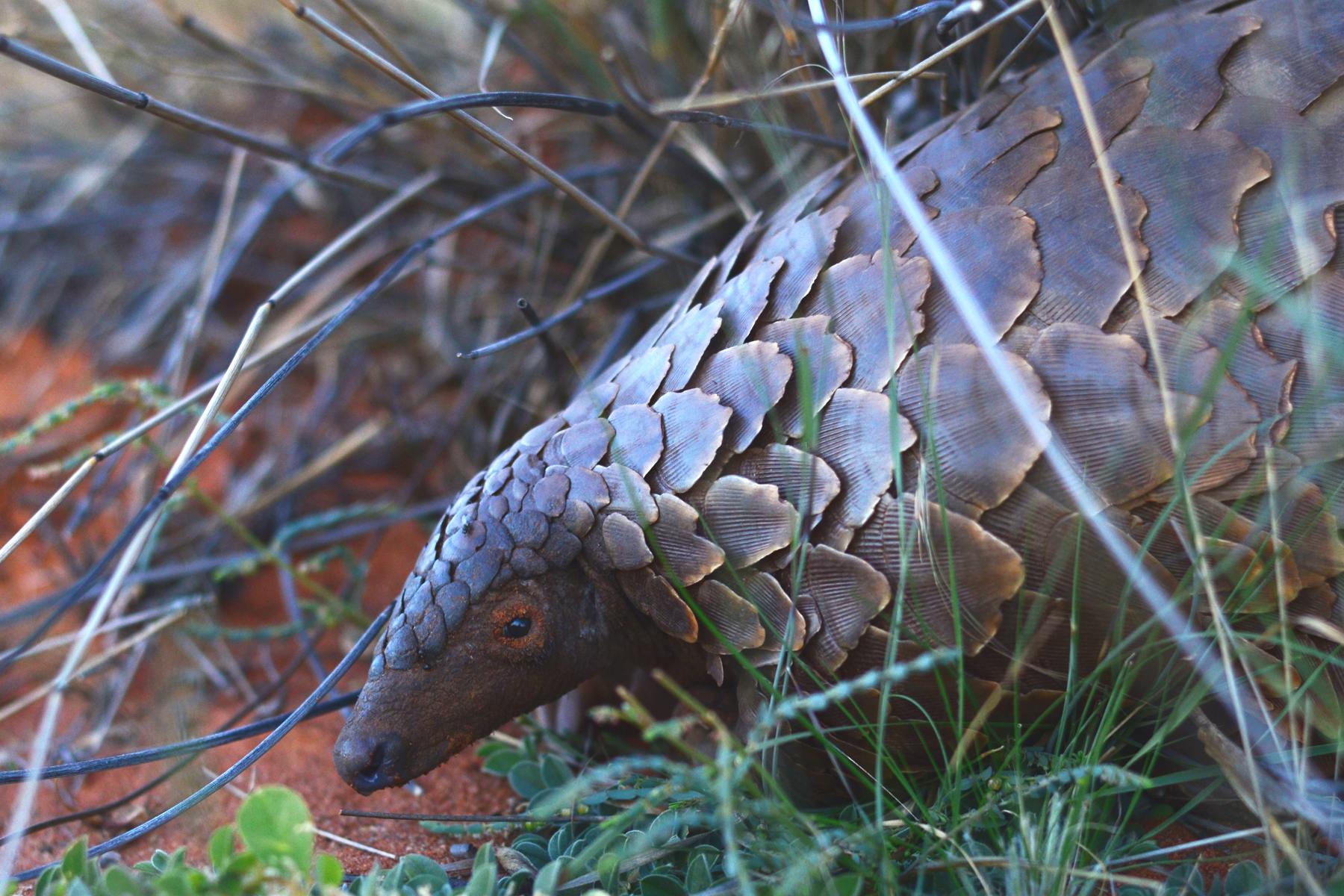
A Temminck’s ground pangolin emerges from the grass.
Protect pangolins on your safari
If you are lucky enough to see a pangolin on your safari, keep your distance and don’t try to interact with it. Follow your guide’s instructions and be ready to move on when the time comes.
Another important guideline: Be careful sharing info on social media. Poachers search social media posts to help them locate pangolins and other rare animals.
Ask your guide what you can share. Some general guidelines:
- Remove the GPS data from your photo.
- Do not mention the specific location where the pangolin was seen. It is usually fine to mention the general location, such as “Serengeti National Park” or “KwaZulu-Natal,” but it’s always a good idea to check with your guide first.
- Make sure there are no identifying landmarks in the photo.
- Do not post on the same day or week that you saw the pangolin, and definitely not in real time! Unless your guide tells you otherwise, experts suggest waiting at least four weeks after your trip to post online about your pangolin sighting.
Explore Your Possibilities for a Pangolin Safari
Ujuzi African Travel can’t guarantee you’ll see a pangolin on your safari. But we can help you plan a safari that will give you the best chance of spotting one in the wild. And no matter your luck when it comes to finding pangolins, you can be certain the journey will bring you close to countless creatures that are just as fascinating.
Let Ujuzi African Travel help you create your dream safari. Schedule a call today!
Sign up for the Ujuzi Newsletter!
From top travel tips to innovative safaris and conservation movement, get inspired to plan your next African safari!
By submitting this form, you are consenting to receive marketing emails from: . You can revoke your consent to receive emails at any time by using the SafeUnsubscribe® link, found at the bottom of every email. Emails are serviced by Constant Contact


